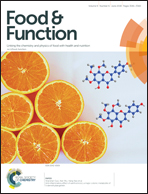Impact of protease and amylase treatment on proteins and the product quality of a quinoa-based milk substitute
Abstract
Plant proteins are often characterized by low solubilities and impaired functionalities e.g. emulsifying properties. In products like milk substitutes, these protein properties are of great importance to ensure good product quality. In this study proteolytic enzymes were used as a tool to increase protein solubility and alter their properties gently. A plant-based milk substitute based on quinoa was produced and treated with different enzymes. One α-amylase and three commercial proteases were selected: Hitempase 2XP, Profix 100L, Bioprotease N100L, and Flavourzyme 1000L. The protein solubility of the samples was initially low with 48.02% and was improved with the increasing degree of hydrolysis up to a value of 75.82% for Profix. These results were supported by SDS-PAGE and circular dichroism analysis: especially Profix degraded the proteins extensively. Quality characteristics, such as foaming, and emulsifying properties were not influenced considerably by the protease treatment. The results of this study provide an in-depth understanding of the effects of different enzymes in a complex system of a plant-based milk substitute and contribute to the development of protein based products.



 Please wait while we load your content...
Please wait while we load your content...